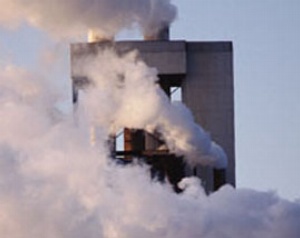
From Ukraine peace plans to Kazakh uranium—all that and more in our new nuclear digest
Our November Nuclear Digest by Bellona’s Environmental Transparency Center is out now. Here’s a quick taste of just three nuclear issues arising in U...
News

Publish date: February 10, 2021
News
Norway will seek to more than triple its tax on carbon dioxide by 2030, increasing its charge for a ton of emitted CO2 equivalents from €60 to €200, the government said in a wide-ranging white paper spelling out the country’s climate action plan.
Released on January 8, the white paper outlines how Norway will achieve a 45% reduction in emissions not falling under the Emissions Trading System by 2030, but the new increase in the CO2tax has sparked the most debate. The government’s position is that by increasing the cost of emitting CO2, there will be stronger incentives to reduce emissions.
The increase in CO2 tax is applicable to sectors both covered and not covered by EU ETS. For operators covered by EU ETS, the combined cost of the national tax and of ETS payments will be set at €200 per ton CO2 by 2030, under the latest plans. The proposed CO2 tax is therefore probably the most ambitious carbon tax in the world.
If approved by the parliament, this will be Norway’s first combined carbon price. Until now, the CO2 tax have been adjusted annually in the national budget independent of the EU ETS carbon market price, and has typically increased by 2-10% annually in recent years.
As the EU Emission Trading System (EU ETS) has underdelivered on its promises on carbon price and emission reductions, the Dutch government has also introduced a carbon tax setting a minimum price for CO2 emissions compared to the EU ETS-price.
The Dutch CO2 tax on industrial CO2 emissions starts at €30 per ton CO2 in 2021 and is planned to reach €125 per ton CO2 by 2030. The tax payable will be the difference between the tax level and the price in the EU ETS for that year, so that total carbon price is equal to the full tax. In addition to installations covered by EU ETS, the carbon tax also covers waste incineration plants and nitrous oxide installations. Electricity production and installations producing district heating are already covered by a CO2 tax introduced last year, which is at a lower rate.
The Norwegian Government’s policy is not to increase the overall level of taxation. Any tax increase will therefore be offset by reducing other taxes correspondingly to avoid decreased competitiveness and carbon leakage. Environmental NGOs have made clear that other environmental taxes must not be lowered to compensate for the increased CO2 tax as this might reduce the incentive to reduce emissions.
The CO2 tax aligns well with the “polluter pays principle” for most industries and can serve as an efficient and technology-neutral catalyst for emission-free solutions across sectors.
Waste incinerators oppose the increased CO2 tax, and suggests the CO2 tax should be allocated to the producer of fossil carbon in products for market and claim they have little influence over the volume of fossil carbon being combusted in their waste incinerators.
The Norwegian Government’s white paper is currently on hearing and has received input from 120 organizations who participated in the hearing on February 2. and 4. The date of voting in parliament is currently not set.
Many of the organizations participating at the hearing on February 2 supported the increased CO2 tax, and many stipulated that the increase in CO2 tax should be allocated to a dedicated CO2-fund/CCS-fund to finance carbon capture. Among the supporters were The Confederation of Norwegian Enterprise (NHO), The Federation of Norwegian Enterprise (Virke), The United Federation of Trade Unions (Fellesforbundet), The Norwegian Oil and Gas Association and The Federation of Norwegian Industries (Norsk Industri).
The CO2 tax covers both EU ETS-sector and non-EU ETS sector. The CO2 tax is levied on combustion of fossil fuels and CO2 emissions from petroleum industry. Some sectors are exempt from the tax, e.g. agriculture.
Norway was one of the first countries in the world to introduce a carbon tax, in 1991. In the National Budget of 2021, the tax rates are NOK 1.27 per standard cubic metre of gas or per litre of oil or condensate (NOK 543 per tonne CO2) and NOK 8.76 per standard cubic metre natural gas emissions.
The expected total tax levied is NOK 6 billion in 2021.
The introduction of a tax on CO2 emissions in 1991, and the European requirements for CO2 content in sales gas laid the foundation for developing the two Norwegian CO2 storage projects Sleipner (1996) and Snøhvit (2008).

Our November Nuclear Digest by Bellona’s Environmental Transparency Center is out now. Here’s a quick taste of just three nuclear issues arising in U...

For three years now, Bellona has continued its work in exile from Vilnius, sustaining and expanding its analysis despite war, repression, and the collapse of international cooperation with Russia in the environmental and nuclear fields

The Board of the Bellona Foundation has appointed former Minister of Climate and the Environment Sveinung Rotevatn as Managing Director of Bellona No...

Økokrim, Norway’s authority for investigating and prosecuting economic and environmental crime, has imposed a record fine on Equinor following a comp...